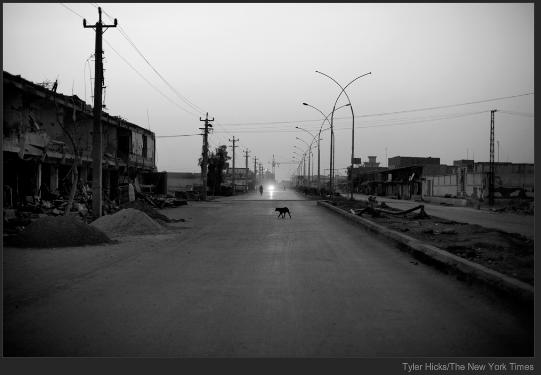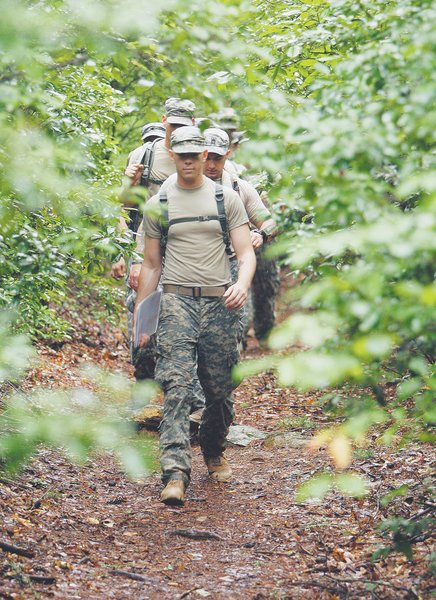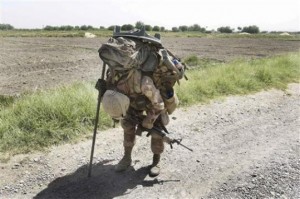After the Army’s AR 15-6 investigation, General Petraeus has ordered a new investigation of the Battle of Wanat, in what may be deemed a victory for the fathers of both 1st Lt. Jonathan Brostrom and Private Gunnar Zwilling who had requested such an investigation.
The increased attention brought to bear on the Battle of Wanat comes partially as a result of an unpublished study by an Army Historian at the Combat Studies Institute at Fort Leavenworth named Douglas R. Cubbison which I have reviewed as I stated two months ago.
I found that Mr. Cubbison did a remarkably able job of laying out the framework, historical and military, for the engagement, and made careful use of the facts to weave a narrative together of the event and things that lead to it. Where I found Mr. Cubbison’s study lacking was his focus on heavy kinetics and the lack of meetings with elders. In other words, the failure at Wanat had to do with the failure to implement proper counterinsurgency, i.e., winning hearts and minds, or so much of his study concluded.
To be sure, Mr. Cubbison does outline a number of tactical failures, but as I stated two months ago, in my humble opinion Mr. Cubbison’s analysis goes awry when tackling the elements of population-centric counterinsurgency. Colonel William B. Ostlund documents the kinetic engagements during the deployment in his analysis of lessons learned.
Ultimately, the task force was involved in 1,100 enemy contacts. Those engagements required:
●5,400 fire missions (expending 36,500 rounds).
●3,800 aerial deliveries (bombs and gun runs).
●23 Javelin anti-tank missiles.
●108 TOW missiles.
●Hundreds of grenades thrown.
The enemy routinely engaged at the maximum effective
range, but on at least five occasions were close enough to touch Americans. Twenty-six members of Task Force Rock gave their lives in Kunar Province. Other noteworthy Soldier statistics include:
●143 wounded.
●Three nominated for the Medal of Honor.
●Two nominated for the Distinguished Service Cross (one awarded by the time of this publication).
●25 Silver Stars awarded.
●90 Bronze Star Medals with Valor awarded.
●Over 300 Army Commendation Medals with Valor awarded.
Mr. Cubbison reviews this data and remarks that:
“TF Rock was unable to provide commensurate statistics for Shuras conducted, VETCAPS and MEDCAPS performed, quantities of Humanitarian Supplies distributed, economic development projects initiated, schools constructed, or similar economic, political and diplomatic initiatives.”
Later, he also concludes that population-centric counterinsurgency is not consistent with such heavy kinetics. I have always attempted to be open, honest and clear with my readers on this issue. I reject the single center of gravity focus of the Clausewitz school and favor the notion of lines of effort in any counterinsurgency campaign. There is absolutely no reason to place protecting the population over against killing the enemy. Moreover, many COIN campaigns can be more neatly placed into phases, with heavier kinetics dominating the initial stages and more population-centric tactics dominating the subsequent stages.
The Washington Post has a recent article that, while initially pointing to under-resourcing of the efforts in the smaller, less population-heavy provinces, nonetheless steps on the same terrain as the Cubbison study.
Before Brostrom moved to Wanat, he went home on leave to see his parents in Hawaii, where they had settled after his father retired from the Army. One evening, he showed his father videos from Afghanistan. Most of the clips were of Brostrom and his troops under fire at the Bella outpost.
In one video, Brostrom’s battalion fired artillery and white phosphorus, an incendiary weapon, at a distant campfire in the mountains where it had killed insurgents earlier that day. Someone had come to collect the bodies. The soldiers were determined to kill them.
“Here comes a mighty big explosion on this little candlelight ceremony that the Taliban is having for their buddies that died there earlier,” one of the soldiers says on the video. “This is going to be glorious. It is going to be a bloodbath.”
A few seconds later, the mountainside exploded with fire, and the soldiers let up a raucous cheer.
Human rights groups have criticized the United States for employing white phosphorus to kill enemy fighters, but this type of use is permitted under military rules. The elder Brostrom weighed his words carefully before he spoke. “How do you know those people dragging the bodies away weren’t villagers coming to get their relatives?” he asked.
“They are all [expletive] Taliban up there,” the son replied.
The father continued to press his doubts. The son maintained that the hard-nosed approach was the only thing keeping him alive in a hopeless corner of Afghanistan. Finally, the young lieutenant snapped. “You don’t understand,” he said.
“You’re right, son. I don’t,” the father replied. “I don’t understand it. But I am worried. I am really worried.”
[ … ]
A few days after the platoon arrived, a Wanat village elder gave Brostrom a list of Afghans who had been killed in a helicopter attack the previous week. The dead included insurgents but also several local medical personnel who had worked closely with U.S. soldiers. The incident had infuriated people throughout the valley.
On July 13, their fifth day at the Wanat base, Brostrom and Dzwik ordered all of the soldiers to rise at 3:30 a.m. and man their fighting positions. In Afghanistan, the hours just before dawn are typically the most deadly.
Shortly after 4 a.m., an estimated 200 insurgents let loose a torrent of rocket-propelled-grenade fire, destroying the base’s anti-tank missile system and its mortar tubes. Then they trained their guns on the observation post.
The Washington Post makes it seem as if the ham handedness of the U.S. efforts was at least a contributing cause of the event. But there are many things that this account doesn’t tell us. For instance, the town elders had tried to tell the U.S. troops for months that a large scale attack was imminent, and had in fact requested that the Army, which had tried for eleven months to get jirga approval for Vehicle Patrol Base Wanat, simply ignore the highly political inner workings of the jirga and put up the base without approval.
Eleven months delay allowed the Taliban to mass troops, and this plus the horrible terrain of Observation Post Top Side allowed the Taliban to successfully attack with some 300 fighters – near half Battalion size force. Whether the people of the valley were infuriated or not had nothing to do with the massing of Taliban forces, the fact that the people had no control over the Taliban, or the fact that the elders had already informed the American troops that an attack was coming based on their own observations.
We have previously discussed the Taliban tactic of massing of forces to outnumber U.S. Soldiers or Marines. The Battle of Wanat occurred in the Nuristan Province. Not twenty miles from this battle and in the same Province, the Taliban have massed troops once again, killing eight American Soldiers and two Afghan troops.
Eight American soldiers and two Afghan troops have been killed in the deadliest attack on coalition troops for more than a year, officials say.
The battle happened in Nuristan province in the remote east of the country when military outposts were attacked, a Nato statement said.
The Taliban said it carried out the attack. Reports say local officials including a police chief were captured.
Violence has escalated in the east as insurgents relocate from the south.
In a statement, Nato’s International Security Assistance Force (Isaf) said that tribal militia launched attacks on the foreign and Afghan military outposts from a mosque and a nearby village.
The attack is thought to have taken place in the Kamdesh district of Nuristan, and lasted several hours.
About 300 militants attacked one outpost at the foot of a hill, before turning their fire on a US base on higher ground, attacking from two sides, a provincial police chief said.
One Nato spokesman called it a “complex attack in a difficult area”.
Counterinsurgency doctrine says that you must have the support of the population in order to flush out the insurgents. But what the doctrine doesn’t mention is that force projection is the necessary pre-condition for any of that other doctrine to obtain. The population will not ally with the weaker side, and not only are heavy kinetics necessary up front in any such campaign, but the troops necessary to pull this off must be in place.
While it might be easy to point the finger at failing to win hearts and minds, it’s much more difficult (and more salient) to ask why any counterinsurgent would be able to win hearts and minds by continually placing platoon-size forces into hostile provinces to be overrun by half-Battalion size enemy forces?
Prior:
Taliban Tactics: Massing of Troops
The Contribution of the Afghan National Army in the Battle of Wanat
Investigating the Battle of Wanat
Analysis of the Battle of Wanat






